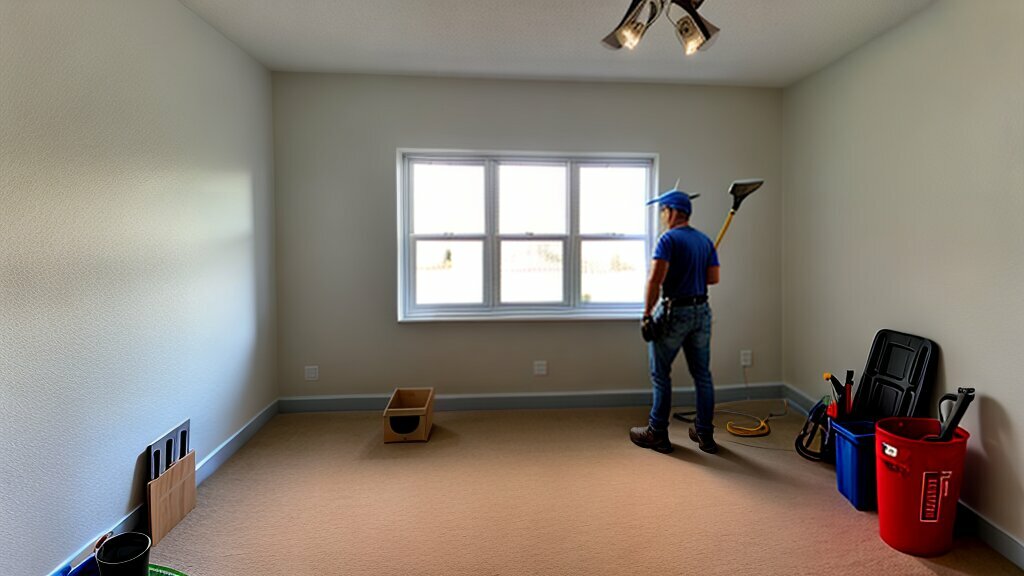If you’re looking for a new project to tackle at home, why not try DIY plastering? Not only is it a great way to improve your DIY skills, but it can also add value to your home. In this tutorial, we’ll guide you through the process of plastering your walls, step by step.
Whether you’re a beginner or an experienced DIYer, our tutorial is designed to help you achieve a smooth and seamless plastering finish. We’ll cover everything from the essential tools and materials you’ll need to proper preparation techniques and applying the plaster.
Key Takeaways:
- DIY plastering in Kent is a great way to add value to your home.
- Our tutorial is designed for both beginners and experienced DIYers.
- We’ll cover everything from essential tools and materials to applying the plaster.
Essential Tools and Materials for DIY Plastering
Before you begin your DIY plastering project, you must ensure that you have all the necessary tools and materials to achieve a smooth and professional finish. Below are the essential tools and materials you will need:
Tools
| Tool | Description |
|---|---|
| Trowel | A flat tool used for applying and smoothing plaster onto walls. |
| Plastering Float | A rectangular tool used for spreading and smoothing plaster onto walls. |
| Mixer | A powered tool used for mixing plaster and water to the desired consistency. |
| Sander | A powered tool used for smoothing out any rough edges or bumps on the plastered surface. |
Materials
- Plaster – You will need to choose the right type of plaster depending on the surface you are working with, such as gypsum plaster for indoor walls or lime plaster for external walls.
- Jointing Compound – Used for filling gaps between plasterboard or between old and new plaster surfaces.
- Plasterboard – Used to repair damaged walls or to create a smooth base for plastering.
It’s essential to use good quality tools and materials to achieve a professional-looking finish. Investing in high-quality tools and materials will save you time and money in the long run.
Preparing the Surface for Plastering
Before you begin plastering your walls, it’s crucial to prepare the surface to ensure a smooth and even finish. Here’s a step-by-step guide on how to prepare your walls for plastering:
- Clean the walls: Use a dry brush or vacuum to remove any dust or debris from the walls.
- Remove loose paint or wallpaper: Use a scraper or sandpaper to remove any loose or flaking paint or wallpaper. Be sure to wear appropriate protective gear, such as a dust mask and gloves.
- Repair any cracks or holes: Use a filler such as Polyfilla to fill in any cracks or holes in the wall. Smooth out the filler with a scraper or putty knife and allow to dry completely.
- Smooth out rough areas: Sand down any rough areas on the walls using sandpaper. This will ensure a smooth and even plastering finish.
By properly preparing the surface, you’ll be on your way to achieving a flawless plastering finish.
Applying the Plaster
Now that you have prepared the surface, you are ready to apply the plaster. Start by mixing the plaster according to the manufacturer’s instructions and achieving the right consistency. You can use a mechanical mixer to save time and ensure even consistency.
Once the plaster is ready, apply it to the wall using a steel trowel. Use sweeping strokes to spread the plaster evenly, making sure to fill any gaps or holes. Remember to work quickly and avoid overworking the plaster, as this can cause it to dry too quickly and result in an uneven finish.
As you work, use a straight edge to ensure that the plaster is levelled and smooth. You can also use a feather edge to achieve a seamless transition between the plastered area and the surrounding wall.
Dealing with Corners and Edges
Plastering corners and edges can be a bit tricky, but it is essential for achieving a polished finish. To plaster corners, use a beading or mesh tape and apply plaster to each side separately, making sure to feather the edges to avoid any bumps or unevenness. For edges, use a corner trowel to create a sharp edge and then work the plaster inwards.
Drying and Sanding
Once you have applied the plaster, allow it to dry completely. This can take anywhere from a few hours to a day or two, depending on the thickness of the plaster and the humidity levels in the room. You can check if the plaster is dry by tapping it lightly with your knuckles; if it sounds solid, it is ready to be sanded.
Use a sanding block to smooth out any rough patches or bumps in the plaster. Start with a coarse grit sandpaper and work your way up to a finer grit for a smoother finish.
Congratulations! You have completed the plastering process. Now you can move on to the finishing touches such as skimming and trowel markings.
Finishing Touches and Troubleshooting
With the plaster applied to your walls, it’s time to add those finishing touches to achieve a professional look. One technique to use is feathering, which involves using a wet brush to smooth the edges of the plaster and blend it with the surrounding surface. Skimming is another technique that involves applying a thin layer of plaster over the entire surface to create a smooth finish. And don’t forget about trowel markings – these can add a decorative touch to your plastering project.
If you encounter any issues during the plastering process, don’t worry – there are some common troubleshooting solutions. For example, bubbles can form during plastering, but these can be easily fixed by piercing them with a pin and smoothing over the area with a trowel. Cracks can also be addressed by using a jointing compound or filler, while uneven surfaces can be smoothed over with sandpaper or a sanding block.
Remember, practice makes perfect, so don’t be afraid to experiment with different techniques and methods to find what works best for your DIY plastering project.
Conclusion
Now that you have learned the basics of DIY plastering in Kent, you should feel confident in tackling this project on your own. Remember to gather all the necessary tools and materials before beginning, and properly prepare the surface before applying the plaster.
Applying the plaster itself requires patience and technique, but with the step-by-step process we have provided, you should be able to achieve a smooth and professional finish. And if you encounter any issues along the way, our guide to troubleshooting common plastering problems should help you overcome them.
Professional Plastering Services in Kent
If you prefer to leave your plastering project to the professionals, Kent Plasterers is a local service that covers the whole of Kent. Their experienced team can provide expert guidance and ensure a flawless plastering finish. Give them a call at 0203 1304 078 to schedule a consultation.
FAQ
Q: Can I plaster my walls without any prior experience?
A: Yes, this tutorial is designed to guide beginners through the process of DIY plastering in Kent.
Q: What tools and materials do I need for plastering?
A: Essential tools include trowels, plastering floats, mixers, and sanders. Materials needed include plaster, jointing compound, and plasterboard.
Q: How do I prepare the surface before plastering?
A: Proper surface preparation involves cleaning the walls, removing loose paint or wallpaper, and repairing any cracks or holes.
Q: What is the step-by-step process of applying plaster?
A: The process includes mixing the plaster to the right consistency and applying it evenly on the walls. Tips and techniques will be provided for a smooth finish.
Q: Are there any finishing touches to achieve a professional look?
A: Techniques such as feathering, skimming, and trowel markings can be used for finishing touches. This section will cover them in detail.
Q: What should I do if I encounter issues during the plastering process?
A: This section will address common troubleshooting issues such as bubbles, cracks, and uneven surfaces and provide solutions for them.

